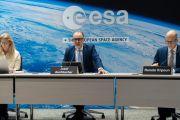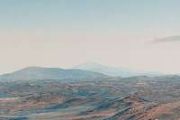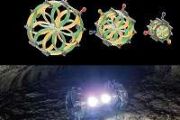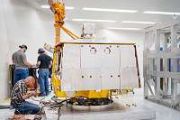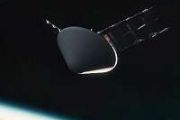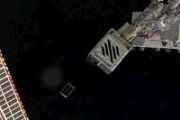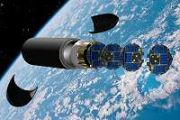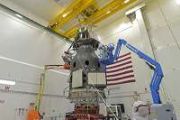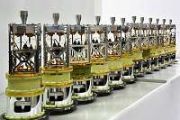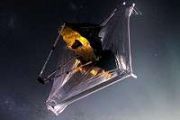
Copernical Team
Seventh and Eighth O3b mPOWER Satellites to Start Delivering Connectivity Services
 SES reports that the latest pair of O3b mPOWER satellites launched in December 2024 are now ready to offer services across the globe.
Featuring redesigned payload power modules, the seventh and eighth O3b mPOWER satellites are bolstering the capabilities of SES's second-generation medium earth orbit (MEO) system, supporting the delivery of high throughput and predictable low latency servic
SES reports that the latest pair of O3b mPOWER satellites launched in December 2024 are now ready to offer services across the globe.
Featuring redesigned payload power modules, the seventh and eighth O3b mPOWER satellites are bolstering the capabilities of SES's second-generation medium earth orbit (MEO) system, supporting the delivery of high throughput and predictable low latency servic SwRI-led research finds particles energized by magnetic reconnection in the nascent solar wind
 New research led by a Southwest Research Institute scientist identified a new source of energetic particles near the Sun. These definitive observations were made by instruments aboard NASA's Parker Solar Probe, which detected the powerful phenomena as the spacecraft dipped in and out of the solar corona.
These new results offer fresh perspectives on how magnetic reconnection could heat the
New research led by a Southwest Research Institute scientist identified a new source of energetic particles near the Sun. These definitive observations were made by instruments aboard NASA's Parker Solar Probe, which detected the powerful phenomena as the spacecraft dipped in and out of the solar corona.
These new results offer fresh perspectives on how magnetic reconnection could heat the Rocket Lab Schedules Third Electron Launch in 24 Days to Deploy Next Mission for iQPS
 Rocket Lab has announced the launch window for its next mission for multi-launch customer, Institute for Q-shu Pioneers of Space, Inc. (iQPS), a Japan-based Earth imaging company.
The mission, named 'The Mountain God Guards,' will launch from Rocket Lab Launch Complex 1 in New Zealand during a launch window that opens on June 10, 2025 UTC. The mission will launch a single synthetic apertur
Rocket Lab has announced the launch window for its next mission for multi-launch customer, Institute for Q-shu Pioneers of Space, Inc. (iQPS), a Japan-based Earth imaging company.
The mission, named 'The Mountain God Guards,' will launch from Rocket Lab Launch Complex 1 in New Zealand during a launch window that opens on June 10, 2025 UTC. The mission will launch a single synthetic apertur iRocket and Wilbur Ross-backed BPGC Acquisition eye iRocket listing on Nasdaq
 Innovative Rocket Technologies Inc. ("iRocket"), a reusable space rocket developer, and BPGC Acquisition Corp. ("BPGC"), a special purpose acquisition company sponsored by The Hon. Wilbur Ross, the 39th U.S. Secretary of Commerce with more than 55 years of private equity and investment banking experience, and BPGC Management LP, an independent private equity firm dedicated to opportunistic buyou
Innovative Rocket Technologies Inc. ("iRocket"), a reusable space rocket developer, and BPGC Acquisition Corp. ("BPGC"), a special purpose acquisition company sponsored by The Hon. Wilbur Ross, the 39th U.S. Secretary of Commerce with more than 55 years of private equity and investment banking experience, and BPGC Management LP, an independent private equity firm dedicated to opportunistic buyou Voyager Announces Launch of Initial Public Offering
 Voyager Technologies, Inc. (Voyager) reports it has commenced the roadshow for its proposed underwritten initial public offering of 11,000,000 shares of its Class A common stock. In addition, the underwriters of the offering will have a 30-day option to purchase from Voyager up to 1,650,000 additional shares of its Class A common stock at the initial public offering price, less underwriting disc
Voyager Technologies, Inc. (Voyager) reports it has commenced the roadshow for its proposed underwritten initial public offering of 11,000,000 shares of its Class A common stock. In addition, the underwriters of the offering will have a 30-day option to purchase from Voyager up to 1,650,000 additional shares of its Class A common stock at the initial public offering price, less underwriting disc Impulse Space Secures $300 Million Series C to Accelerate the Future of In-Space Mobility
 Impulse Space reports it has raised $300 million in a Series C funding round-one of the largest venture rounds in the history of the space industry. The round, led by Linse Capital, brings Impulse's total capital raised to $525 million.
The pre-emptive raise is both a positive signal about Impulse's business trajectory and a direct response to surging customer demand. With over 30 signed c
Impulse Space reports it has raised $300 million in a Series C funding round-one of the largest venture rounds in the history of the space industry. The round, led by Linse Capital, brings Impulse's total capital raised to $525 million.
The pre-emptive raise is both a positive signal about Impulse's business trajectory and a direct response to surging customer demand. With over 30 signed c New Venus observation mission - World's first long-term planetary cubesat study by Korea's Institute for Basic Science and NanoAvionics
 Kongsberg NanoAvionics (NanoAvionics), a leading small satellite bus manufacturer and mission integrator, has been selected by the Institute for Basic Science (IBS) in South Korea to build the first CubeSat for the world's first long-term planetary science campaign which will use a series of CubeSats to monitor Venus from low Earth orbit.
This long-term Venus observation initiative, the CL
Kongsberg NanoAvionics (NanoAvionics), a leading small satellite bus manufacturer and mission integrator, has been selected by the Institute for Basic Science (IBS) in South Korea to build the first CubeSat for the world's first long-term planetary science campaign which will use a series of CubeSats to monitor Venus from low Earth orbit.
This long-term Venus observation initiative, the CL Space pebbles and rocks play pivotal role in giant planet's formation
 Scientists analysing an ultra-hot giant planet believe it was formed by absorbing lightweight gases like methane evaporating from tiny space pebbles, whilst being bombarded with large rocky objects.
Using the James Webb Space Telescope (JWST) to explore the atmosphere of WASP-121b, researchers successfully detected water (H2O), carbon monoxide (CO), and silicon monoxide (SiO) in the side f
Scientists analysing an ultra-hot giant planet believe it was formed by absorbing lightweight gases like methane evaporating from tiny space pebbles, whilst being bombarded with large rocky objects.
Using the James Webb Space Telescope (JWST) to explore the atmosphere of WASP-121b, researchers successfully detected water (H2O), carbon monoxide (CO), and silicon monoxide (SiO) in the side f Meet Smile
 Video:
00:02:27
An animation showing ESA’s Smile mission watching on as the Sun’s solar wind interacts with Earth’s magnetic field.
Video:
00:02:27
An animation showing ESA’s Smile mission watching on as the Sun’s solar wind interacts with Earth’s magnetic field. Missions to Mars with the Starship could only take three months
This request seems a bit unusual, so we need to confirm that you're human. Please press and hold the button until it turns completely green. Thank you for your cooperation!
Press and hold the button
If you believe this is an error, please contact our support team.
185.132.36.159 : eea91983-5115-49ea-8188-0312df62




